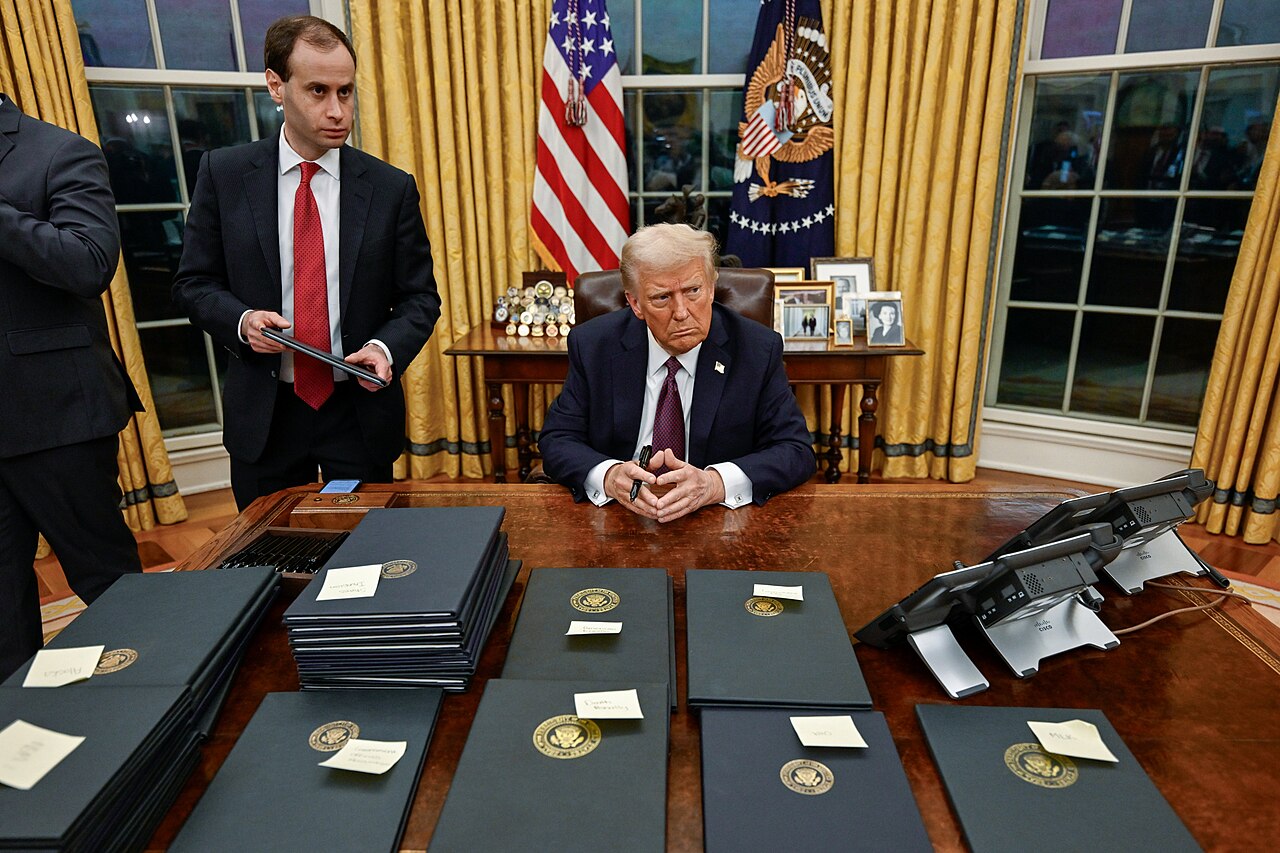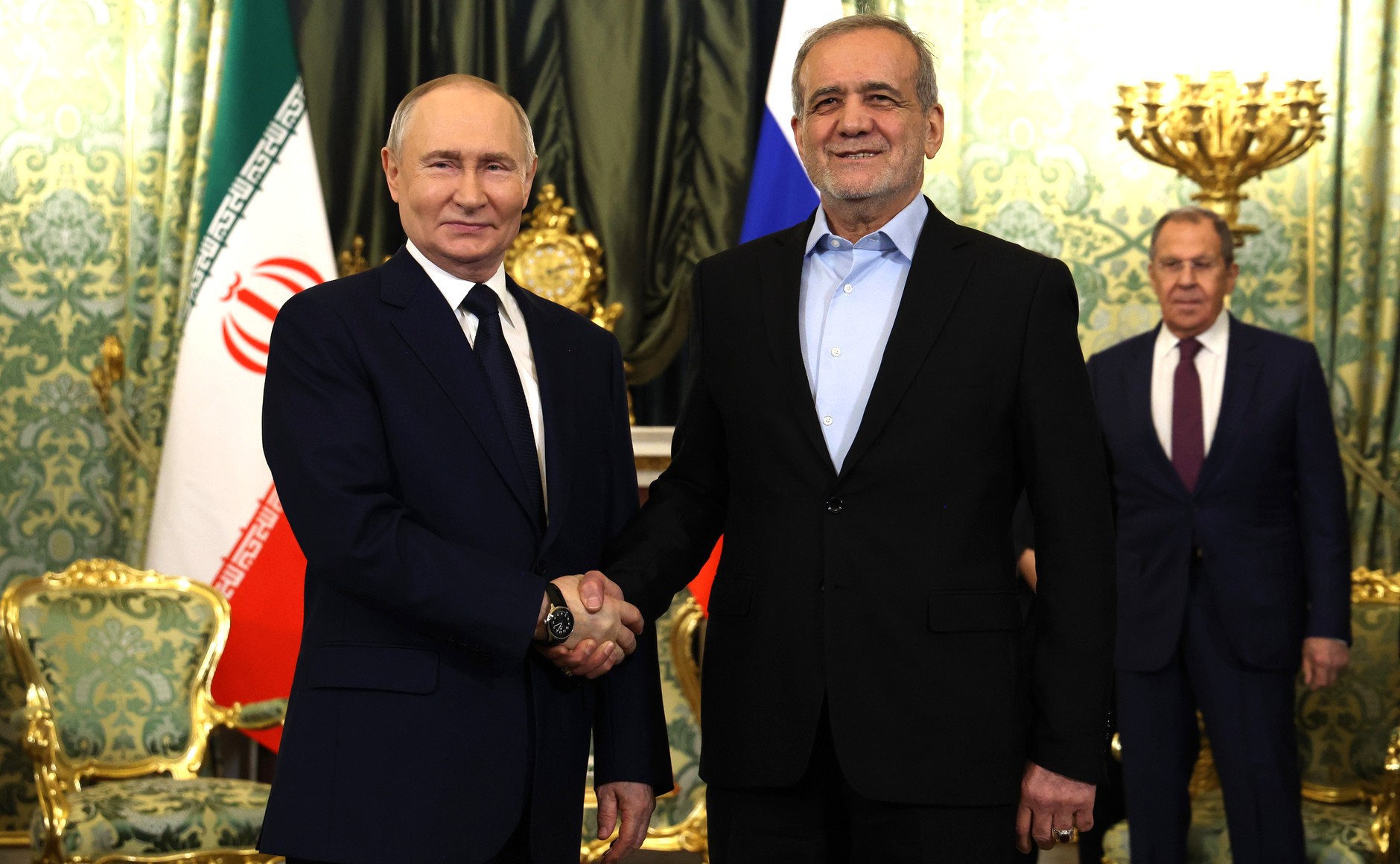End of the Empire is a once-monthly feature on all news relating to the transition from the unipolar world of the US Empire to a multipolar world.
The world is in the midst of reacting to the new schedule of import tariffs implemented by the Trump Administration, which range from a baseline 10% tariff applied to all US trading partners to as high as the fifty and sixty percentiles for nations with whom Trump has a bone to pick, or who simply have a significant trade imbalance with the US.
“New world” rhetoric seems to be appropriate if applied to the situation with Washington’s biggest trade partner: China. A tariff rate of 105%, potentially even 115% on Chinese imports has just entered into effect, leaving the world stunned and waiting to see how markets react. Shipping companies and the firms that use them, however, have no such luxury, and an exclusive interview on South China Morning Post reveals that some firms are simply selling or giving away merchandise already on board container ships because they know no one will buy it at the current rate.
“The loss on every container we ship is now greater than the profit we used to make from shipping two,” said an employee at a China-listed export company speaking on anonymity. “Who’s going to keep doing this? We’ve halted all shipping plans from the Philippines, Vietnam, Indonesia and Malaysia”.
Simply put, the current conditions are that if a US firm wants to import something from China, the Chinese exporter would have to pay the US government 105% of the item’s value in a tax. The Chinese firm would naturally increase the price of the good in question to reflect the new tariff, meaning that either the American firm pays that increased cost, or decline to import the product, at which point the government collects nothing from the transaction, the American firm has to find another supplier, and the Chinese firm would have to find another buyer.
Last year, $439 billion worth of goods were sent from China to America to meet the demands of American consumers and producers. In contrast, US exports to China were worth just $144 billion.
SCMP reports the red-hot trade war now underway between the world’s two superpowers is being referred to among industry insiders as “the Long March,” a grim metaphor for the long-term predicted pullback in cross-Pacific trade that references the Chinese civil war between the Red Army and the Kuomintang when Mao Zedong’s forces spent one year in a slow retreat northward across the country.
Good neighborliness
For as difficult as this tariff rate will be to Chinese producers, early indications are that the Chinese government have prepared for such eventualities. China is the world’s largest manufacturing nation, and it’s the biggest trading partner with many of the nation it trades with, such as Australia, Russia, and South Korea.
This Wednesday, a high-level working conference on neighborhood diplomacy organized by the Chinese Ministry of Foreign Affairs wrapped up in Beijing at which Xi Jinping delivered a closing address that spoke of “appropriately” managing differences and enhancing supply chain ties.
China’s relations with its neighbors were “at the best level they have been in modern history,” a release from the official Xinhua news agency stated on Wednesday. “At the same time, (we) are entering a pivotal stage deeply intertwined with shifts in regional dynamics and global developments,” the statement read.
This is the first such conference since 2013 and another indication of the growing focus Beijing has placed on relations with other Asia nations with whom it can trade without major barriers.
Xi’s address, in which he also emphasized the Chinese policy of helping each of its neighbors along their own development path, comes days before his scheduled visits to Malaysia, Cambodia, and Vietnam, all important neighbors of China who were among the hardest hit by President Trump’s new tariff regime.
Xi was actually speaking when news of the 105% tariff broke, after which it was announced that a corresponding tariff on American goods of 55% was also implemented.
“I believe that China will add extra urgency to its cultivation of its neighborhood because these are some of the countries that are hardest hit by Trump’s tariffs,” Dylan Loh, assistant foreign policy professor at Nanyang Technological University in Singapore, told SCMP.
Countries like Vietnam, Indonesia, and Cambodia, received the highest tariff rates because they are export-driven economies with the US being one of their largest markets. Hampered now as businesses in all of them are by these new high tariffs, the desire to seek out new markets for these goods must be enticing.
President Trump started a war of tit-for-tat tariffs and Indo-Pacific military buildup during his first administration. After Joe Biden took charge of the Oval Office, few if any of these aggressive policies were diminished, and in fact, military support to Taiwan dramatically increased, and the CHIPS and Science Act authored by Biden’s allies and signed triumphantly into law opened up a large new front in Trump’s trade war: specifically as it related to constricting China’s supply of key mineral and technical products needed for aerospace and tech sectors.
East Asian producers may find this enough of an indication that it’s time to look for export markets elsewhere, since the 105% tariff rate is just the most-recent escalation in a trade war that’s been simmering for nigh on a decade.
At the same time, by placing tariffs on all trading partners, Trump has significantly hindered the ability to reshore into friendlier or nearer nations, or even to find new import markets for the vast amounts of goods needed and wanted by American manufacturing and consumers that has brought the US merchandise trade deficit up to $1 trillion per year. He has, in effect, left the US economy with no way to avoid paying more or charging more, while leaving East Asia with few other choices than decoupling from the US market. WaL
We Humbly Ask For Your Support—Follow the link here to see all the ways, monetary and non-monetary.
PICTURED ABOVE: Trump at the signing ceremony in the Rose Garden next to a chart showing each country’s tariff rates. PC: The White House via Flickr



